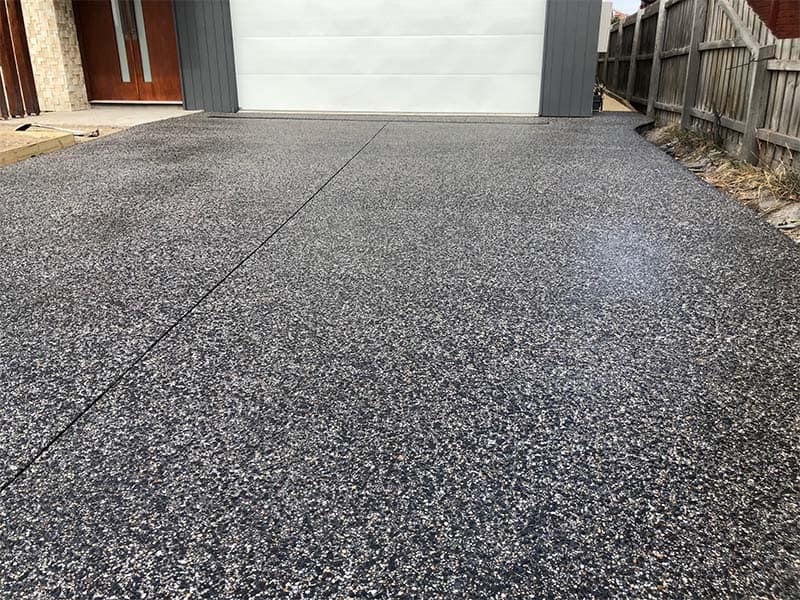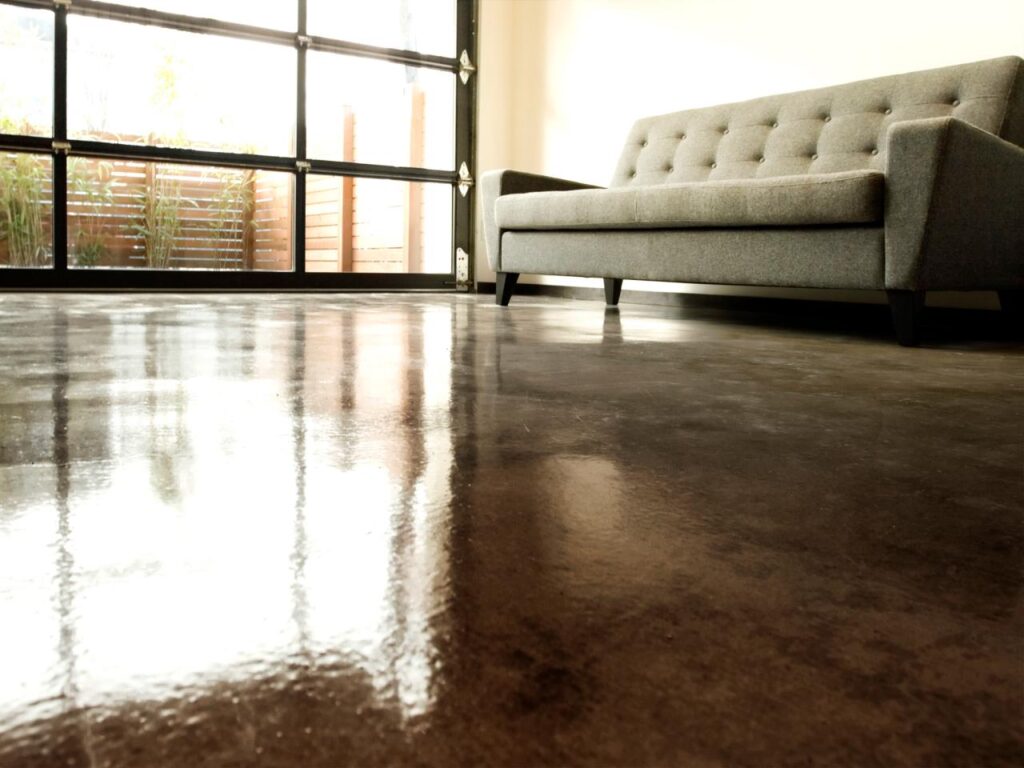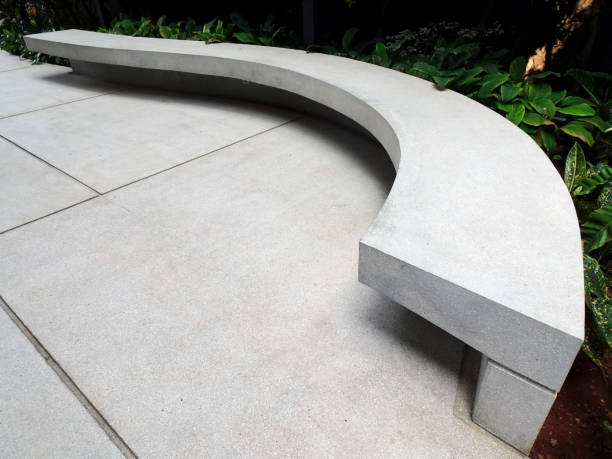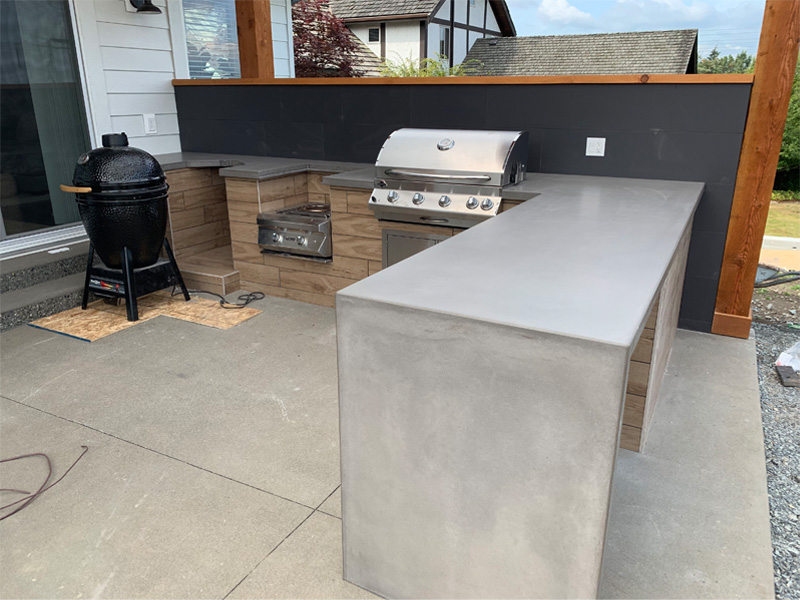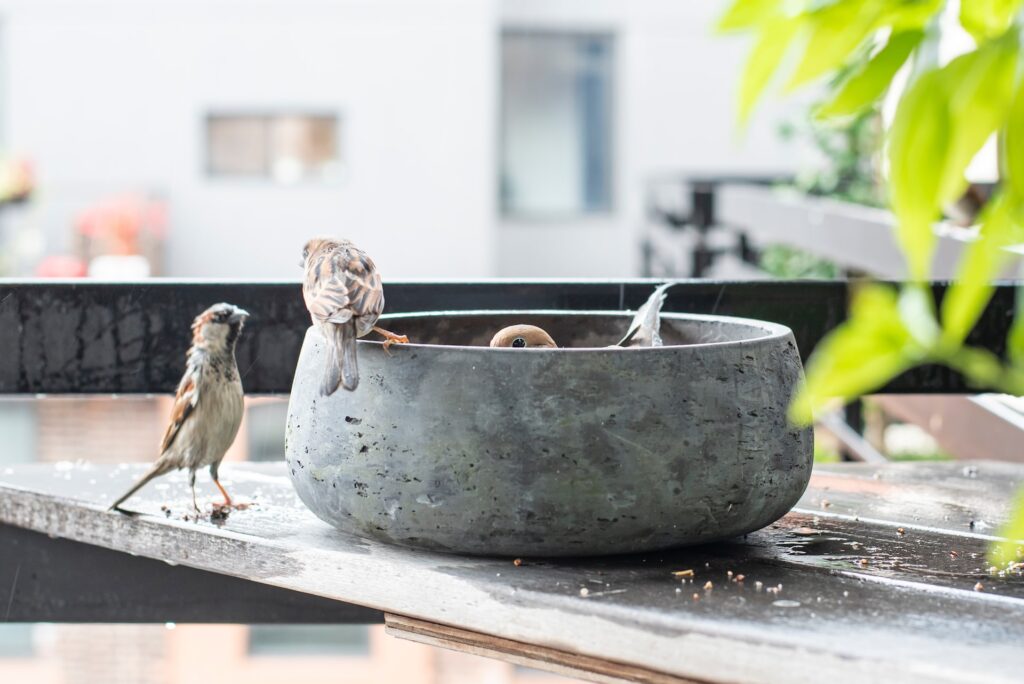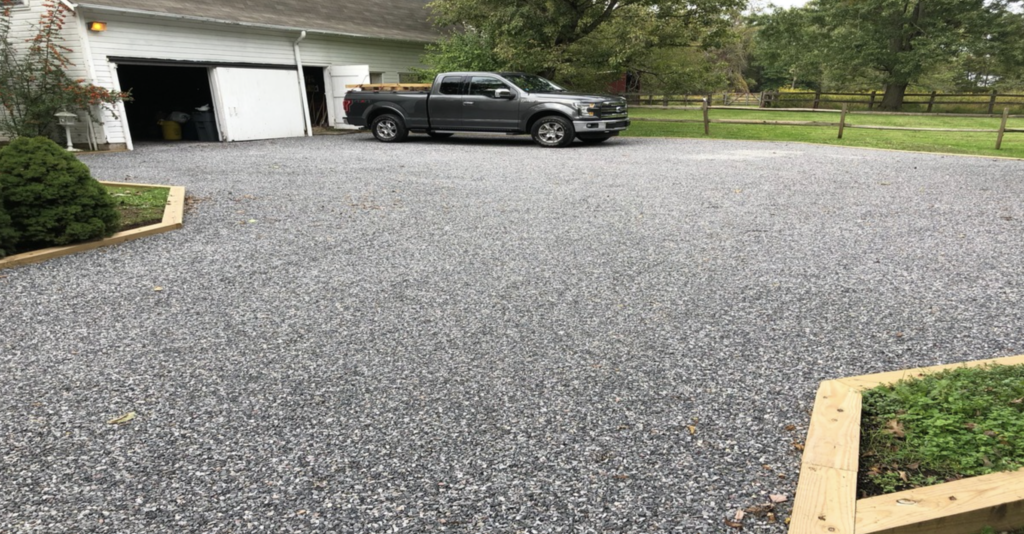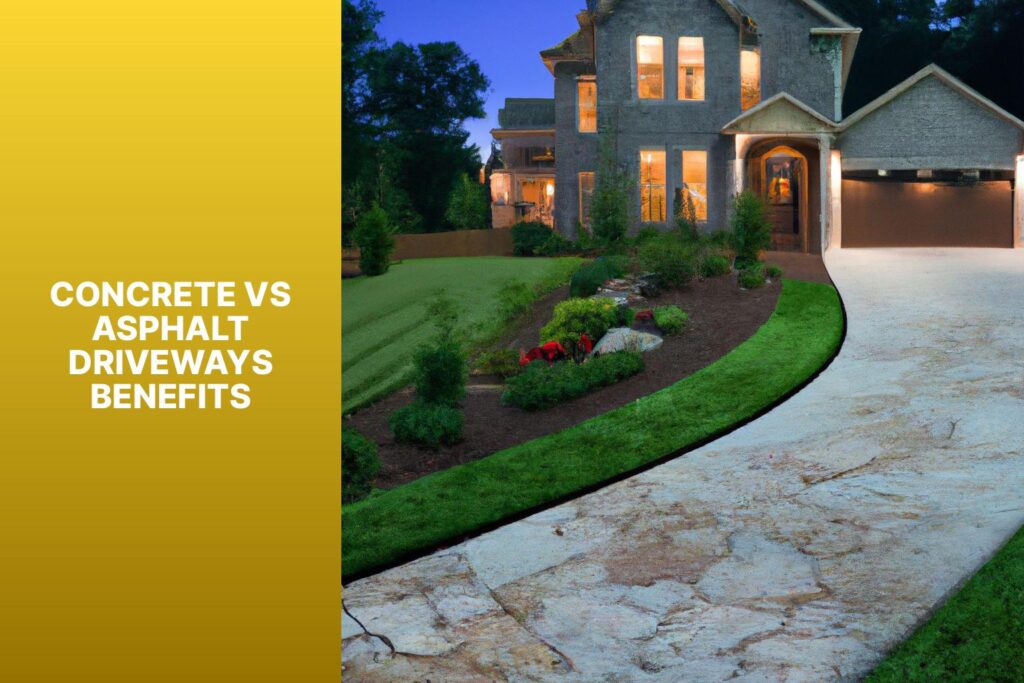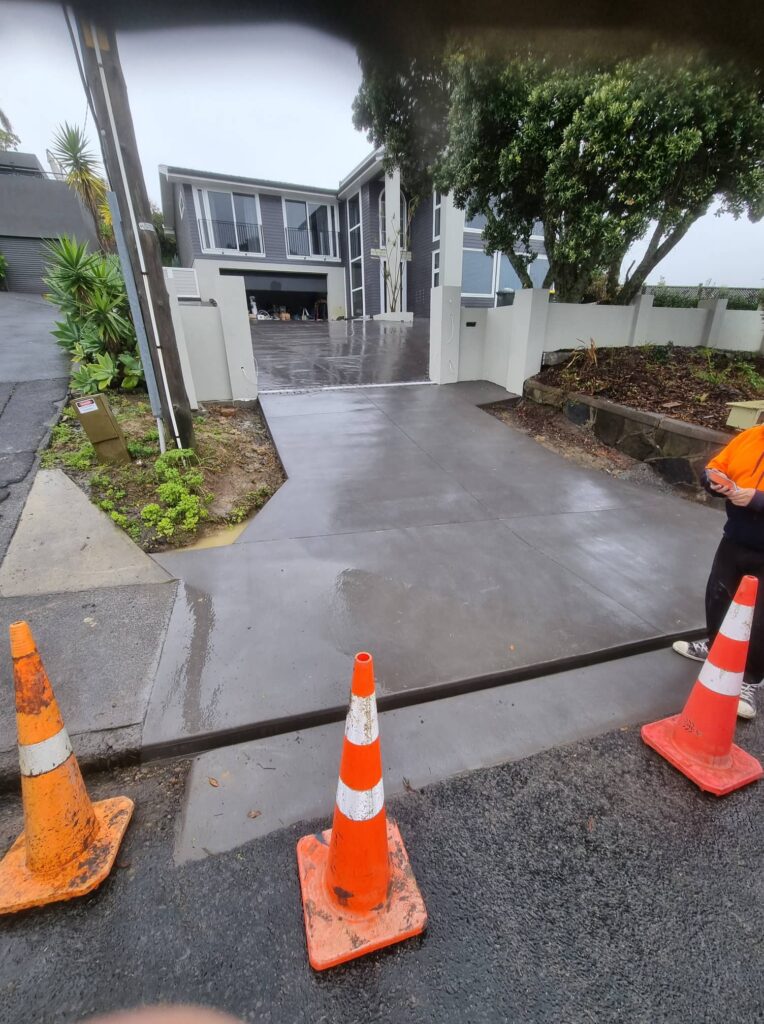Concrete Driveway Resurfacing Options: A Comprehensive Guide
Are you tired of looking at your old, worn-out concrete driveway? Do you cringe at the thought of the expensive and time-consuming process of tearing it up and starting over? Luckily, there are concrete driveway resurfacing options available that can give your driveway a fresh new look without breaking the bank.
Resurfacing your driveway involves applying a new layer of concrete over the existing surface. This can be done to repair cracks, stains, or other damage, or simply to update the look of your driveway. There are several resurfacing options available, including concrete resurfacer, decorative concrete overlays, and microtoppings. Each option has its own benefits and drawbacks, so it’s important to choose the right one for your specific needs.
Concrete resurfacer is a popular option for repairing and updating driveways. It can be used to fill in small defects, such as spalls and gouges, and produce a new wear layer over the existing concrete. Decorative concrete overlays offer a wide variety of design options, including stamped patterns, textures, and colors, to give your driveway a unique and personalized look. Microtoppings are a thin layer of cement that can be used to create a smooth, polished finish over your existing driveway. With so many options available, resurfacing your driveway has never been easier or more affordable.
- Understanding Concrete Driveway Resurfacing
- Preparation for Resurfacing
- Resurfacing Process
- Design and Texture Options
- Maintenance and Durability
- Cost Considerations
- Common Resurfacing Products
- Frequently Asked Questions
- What are some options for resurfacing a worn concrete driveway?
- What factors should be considered when choosing a concrete driveway resurfacing product?
- Can a DIY concrete driveway resurfacing project be successful?
- How long can I expect a concrete driveway resurfacing to last?
- What are the benefits of resurfacing a concrete driveway versus replacing it?
- How can I improve the appearance of an old concrete driveway?
Understanding Concrete Driveway Resurfacing
What is Concrete Resurfacing?
If your concrete driveway is showing signs of wear and tear, resurfacing it can be a cost-effective way to refresh its appearance. Concrete resurfacing involves applying a thin layer of concrete over your existing driveway, giving it a fresh new look. This is an excellent alternative to ripping out and replacing your entire driveway, which can be costly and time-consuming.
Benefits of Resurfacing a Concrete Driveway
There are many benefits to resurfacing your concrete driveway. Firstly, it can improve the appearance of your driveway, making it look brand new. Secondly, it can extend the lifespan of your driveway by repairing any cracks or damage. Additionally, resurfacing can increase the value of your home and improve its curb appeal.
DIY concrete resurfacing is also a popular option for those who want to save money on labor costs. With the right tools and materials, you can easily resurface your driveway yourself. However, it’s important to note that if you’re not experienced in DIY projects, it’s best to hire a professional to avoid costly mistakes.
When it comes to concrete resurfacing products, there are many options to choose from. Concrete resurfacers are available in a variety of colors and textures, allowing you to customize the look of your driveway. Some resurfacers are designed to be applied with a trowel, while others can be sprayed on. It’s important to choose the right product for your specific needs and follow the manufacturer’s instructions carefully.
In conclusion, concrete driveway resurfacing is an excellent option for refreshing aged concrete and improving the appearance of your driveway. Whether you choose to hire a professional or tackle the project yourself, it’s important to choose the right products and follow the instructions carefully to ensure a successful outcome.
Preparation for Resurfacing
Before resurfacing your concrete driveway, proper preparation is necessary to ensure a successful outcome. This section covers two important sub-sections: Cleaning and Repair and Condition Assessment.
Cleaning and Repair
The first step in preparing your driveway for resurfacing is to clean it thoroughly. Remove any debris, dirt, dust, or stains from the surface. Use a power washer to remove any oil or grease stains. If there are any cracks, repair them before resurfacing. Fill in any gaps or holes with concrete filler and allow it to dry completely before moving on to the next step.
Condition Assessment
After cleaning and repairing, assess the condition of your driveway. Check for any signs of damage or wear and tear. Look for areas that are uneven or have settled. If you notice any issues, address them before resurfacing. Grinding the surface may be necessary to create a smooth and even surface.
It is important to note that resurfacing is not a solution for underlying problems. If your driveway has serious structural issues, resurfacing may only be a temporary fix. In such cases, replacing the driveway may be a better option.
In summary, proper preparation is essential for a successful concrete driveway resurfacing. Cleaning and repair and condition assessment are two important sub-sections that should not be overlooked. By addressing these issues before resurfacing, you can ensure a smooth and long-lasting result.
Resurfacing Process
If your concrete driveway is looking worn out and damaged, resurfacing it can be a cost-effective way to give it a fresh look. The resurfacing process involves applying a concrete overlay on top of the existing surface. Here’s a brief overview of the steps involved in the resurfacing process.
Application of Concrete Overlay
The first step in the resurfacing process is to apply a concrete overlay. This involves cleaning the surface thoroughly to remove any dirt, debris, or stains. Once the surface is clean, the overlay is applied using a trowel or a sprayer. The thickness of the overlay can vary depending on the condition of the existing surface and the desired finish. A thicker overlay may be required to cover up cracks or other damage.
Curing
After the overlay is applied, it needs to be cured for a specific period of time. This allows the overlay to dry and harden properly. The curing time can vary depending on the type of overlay used and the weather conditions. It is important to follow the manufacturer’s instructions for curing time and conditions.
Finishing
Once the overlay is cured, it is time to finish the surface. This involves using tools such as a trowel or a grinder to smooth out any rough spots or imperfections. The surface can then be sealed using a concrete sealer to protect it from damage and help it last longer.
Overall, the resurfacing process is a relatively simple and cost-effective way to give your concrete driveway a fresh look. With the right tools and installation techniques, you can achieve a smooth and durable finish that will last for years to come.
Design and Texture Options
When it comes to resurfacing your concrete driveway, you have a variety of design and texture options to choose from. The design and texture you choose can have a significant impact on the overall look and feel of your driveway. Here are some of the most popular design and texture options to consider:
Color Choices
One of the most significant advantages of concrete driveway resurfacing is the ability to choose from a wide range of colors. You can choose a color that complements your home’s exterior or one that stands out and makes a statement. Some popular color choices include earth tones, grays, and even bright colors like red or blue.
Stamped Concrete
Stamped concrete is another popular option for concrete driveway resurfacing. This technique involves using stamps to create a pattern or texture on the concrete surface. Stamped concrete can replicate the look of natural stone, brick, or even wood. You can choose from a wide range of stamp patterns and textures to create a unique and customized look for your driveway.
When choosing a stamped concrete pattern, consider the style of your home and the overall aesthetic you want to achieve. For example, if you have a modern home, you may want to choose a stamped concrete pattern that features clean lines and geometric shapes. On the other hand, if you have a more traditional home, you may want to choose a stamped concrete pattern that replicates the look of natural stone.
Overall, the design and texture options for concrete driveway resurfacing are virtually endless. With so many options to choose from, you can create a driveway that complements your home’s exterior and reflects your personal style.
Maintenance and Durability
To ensure the longevity and durability of your concrete driveway, it is important to perform regular maintenance. Proper maintenance can help restore your driveway’s appearance and protect it from damage caused by weather, traffic, and other factors.
Cleaning and Sealing
One of the most important aspects of concrete driveway maintenance is cleaning and sealing. Regular cleaning helps remove dirt, stains, and other imperfections that can cause long-term damage to the surface. An acid wash can help remove discoloration and restore the driveway’s original appearance.
After cleaning, it is important to apply a sealant to protect the surface from moisture, chemicals, and other harmful substances. Sealants can also help prevent deep cracks from forming in the concrete, which can be costly to repair.
Repairing Deep Cracks
Despite regular maintenance, deep cracks may still form in the concrete driveway. It is important to repair these cracks as soon as possible to prevent further damage. Deep cracks can allow moisture to seep into the concrete, causing it to weaken and deteriorate over time.
To repair deep cracks, it is best to hire a professional. They will be able to assess the damage and recommend the best course of action. In some cases, the crack may need to be filled with a special epoxy or other material to prevent further damage.
In conclusion, regular maintenance is key to ensuring the durability and longevity of your concrete driveway. Cleaning and sealing can help protect the surface from damage, while repairing deep cracks can prevent further deterioration. By taking these steps, you can help restore your driveway’s appearance and protect it from long-term damage caused by weather, traffic, and other factors.
Cost Considerations
When it comes to concrete driveway resurfacing, cost is a major consideration. Here are some factors that can affect the cost of the project.
DIY vs Hiring a Professional
One way to save money on concrete driveway resurfacing is to do it yourself. However, keep in mind that this is a challenging and time-consuming project that requires specialized equipment and materials. If you don’t have experience with concrete work, it’s best to hire a professional contractor to ensure that the job is done correctly.
Quotes and Estimates
When getting quotes from contractors, make sure to ask for a detailed breakdown of the costs involved. This should include the cost of materials, labor, and equipment. You should also ask about any additional fees or charges that may apply, such as disposal fees for old concrete.
It’s a good idea to get quotes from several contractors to compare prices and services. Keep in mind that the lowest quote may not always be the best option. You should also consider the contractor’s experience, reputation, and the quality of their work.
In general, the cost of concrete driveway resurfacing can vary depending on the size of the driveway, the condition of the existing concrete, and the type of resurfacing product used. It’s important to do your research and choose a reputable contractor to ensure that you get the best value for your money.
Remember that concrete driveway resurfacing is often a more cost-effective option than a brand new driveway replacement, so it’s worth considering if your driveway is in need of repair.
Common Resurfacing Products
When it comes to resurfacing your concrete driveway, there are a variety of products available to choose from. In this section, we’ll cover two common types of resurfacing products: concrete coatings and concrete fillers.
Concrete Coatings
Concrete coatings are a popular choice for resurfacing driveways because they can provide a durable, long-lasting finish that can withstand heavy traffic and harsh weather conditions. These coatings can also be tinted or colored to match your home’s exterior, giving your driveway a fresh new look.
Some common types of concrete coatings include:
- Epoxy coatings: Epoxy coatings are a popular choice for garage floors, but they can also be used to resurface driveways. These coatings are extremely durable and resistant to chemicals, making them a good choice if you have a lot of vehicle traffic on your driveway.
- Acrylic coatings: Acrylic coatings are a more affordable option than epoxy coatings, but they are still durable and long-lasting. These coatings are also available in a variety of colors and finishes, so you can choose a look that complements your home’s exterior.
- Polyurethane coatings: Polyurethane coatings are another durable option for resurfacing driveways. They are resistant to UV rays and can withstand heavy traffic, making them a good choice for high-traffic areas.
Concrete Fillers
If your driveway has cracks or other minor damage, you may be able to use a concrete filler to repair the damage and restore your driveway’s appearance. Concrete fillers are typically made from a mixture of cement and sand, and they can be applied to the damaged area with a trowel or putty knife.
Some common types of concrete fillers include:
- Concrete patching compound: Concrete patching compound is a versatile filler that can be used to repair cracks, holes, and other minor damage on your driveway. It sets quickly and can be sanded or painted once it has dried.
- Concrete resurfacer: Concrete resurfacer is a thicker, more durable filler that can be used to repair larger areas of damage on your driveway. It can be applied with a trowel or squeegee and can be tinted or colored to match your existing driveway.
In conclusion, when it comes to resurfacing your concrete driveway, there are several products available to choose from. Concrete coatings and fillers are two common options that can provide a durable, long-lasting finish that can restore your driveway’s appearance and protect it from further damage.
Frequently Asked Questions
What are some options for resurfacing a worn concrete driveway?
There are several options for resurfacing a worn concrete driveway. One option is to apply a concrete overlay, which is a thin layer of concrete that is applied over the existing surface. Another option is to use a concrete resurfacer, which is a thicker material that can be used to fill in cracks and other imperfections in the surface. Both of these options can help to restore the appearance and functionality of a worn concrete driveway.
What factors should be considered when choosing a concrete driveway resurfacing product?
When choosing a concrete driveway resurfacing product, there are several factors to consider. First, it is important to choose a product that is appropriate for the specific conditions of your driveway. For example, if your driveway is exposed to harsh weather conditions, you may need a product that is more durable and weather-resistant. Other factors to consider include the cost of the product, the ease of application, and the expected lifespan of the product.
Can a DIY concrete driveway resurfacing project be successful?
Yes, a DIY concrete driveway resurfacing project can be successful if you have the proper tools and knowledge. However, it is important to note that resurfacing a concrete driveway can be a challenging and time-consuming process, so it is important to be prepared and to follow all instructions carefully. Additionally, if you are not comfortable working with concrete or do not have experience with DIY projects, it may be best to hire a professional.
How long can I expect a concrete driveway resurfacing to last?
The lifespan of a concrete driveway resurfacing project will depend on several factors, including the type of product used, the conditions of the driveway, and the quality of the installation. In general, a well-installed concrete driveway resurfacing can last for several years, but it may need to be resealed or repaired periodically to maintain its appearance and functionality.
What are the benefits of resurfacing a concrete driveway versus replacing it?
Resurfacing a concrete driveway can be a more cost-effective and less disruptive option than replacing it entirely. Additionally, resurfacing can help to restore the appearance and functionality of a worn or damaged driveway without the need for extensive excavation or construction. Other benefits of resurfacing a concrete driveway include improved durability, increased slip resistance, and enhanced curb appeal.
How can I improve the appearance of an old concrete driveway?
There are several ways to improve the appearance of an old concrete driveway. One option is to apply a decorative concrete overlay, which can be used to create a variety of patterns and textures. Another option is to use a concrete stain or dye to add color to the surface of the driveway. Additionally, resurfacing the driveway with a new layer of concrete can help to cover up imperfections and give the surface a fresh, new look.
About the Author:
Mike Veail is a recognized digital marketing expert with over 6 years of experience in helping tradespeople and small businesses thrive online. A former quantity surveyor, Mike combines deep industry knowledge with hands-on expertise in SEO and Google Ads. His marketing strategies are tailored to the specific needs of the trades sector, helping businesses increase visibility and generate more leads through proven, ethical methods.
Mike has successfully partnered with numerous companies, establishing a track record of delivering measurable results. His work has been featured across various platforms that showcase his expertise in lead generation and online marketing for the trades sector.
Learn more about Mike's experience and services at https://theleadguy.online or follow him on social media:
